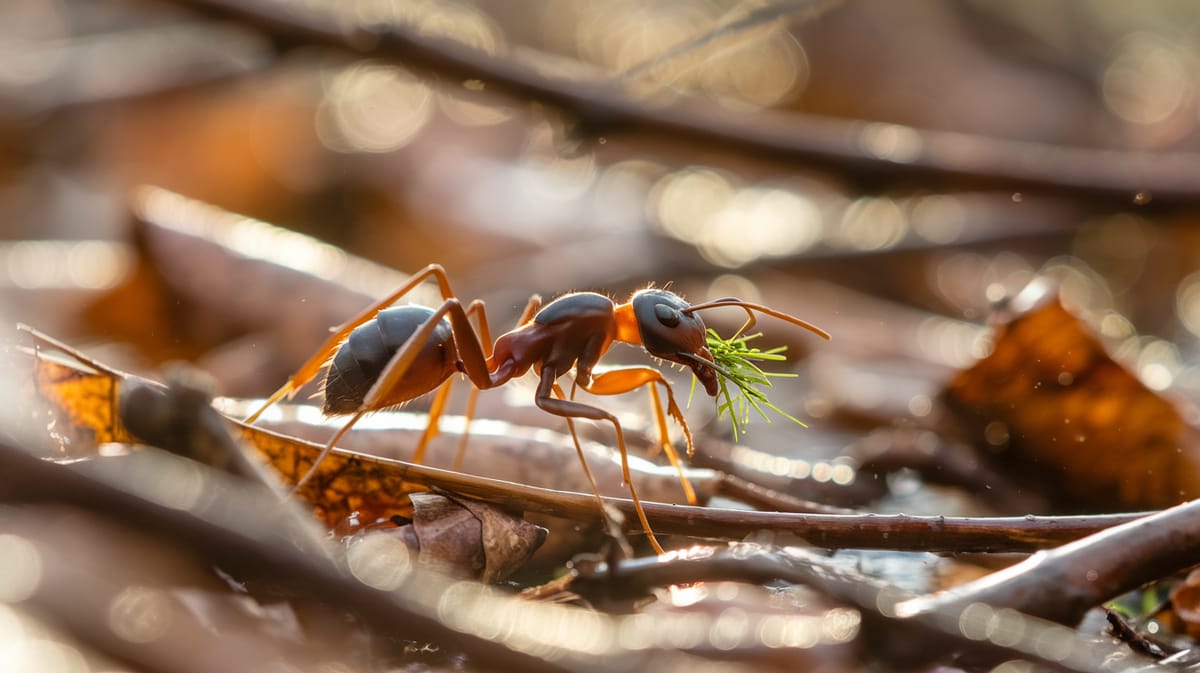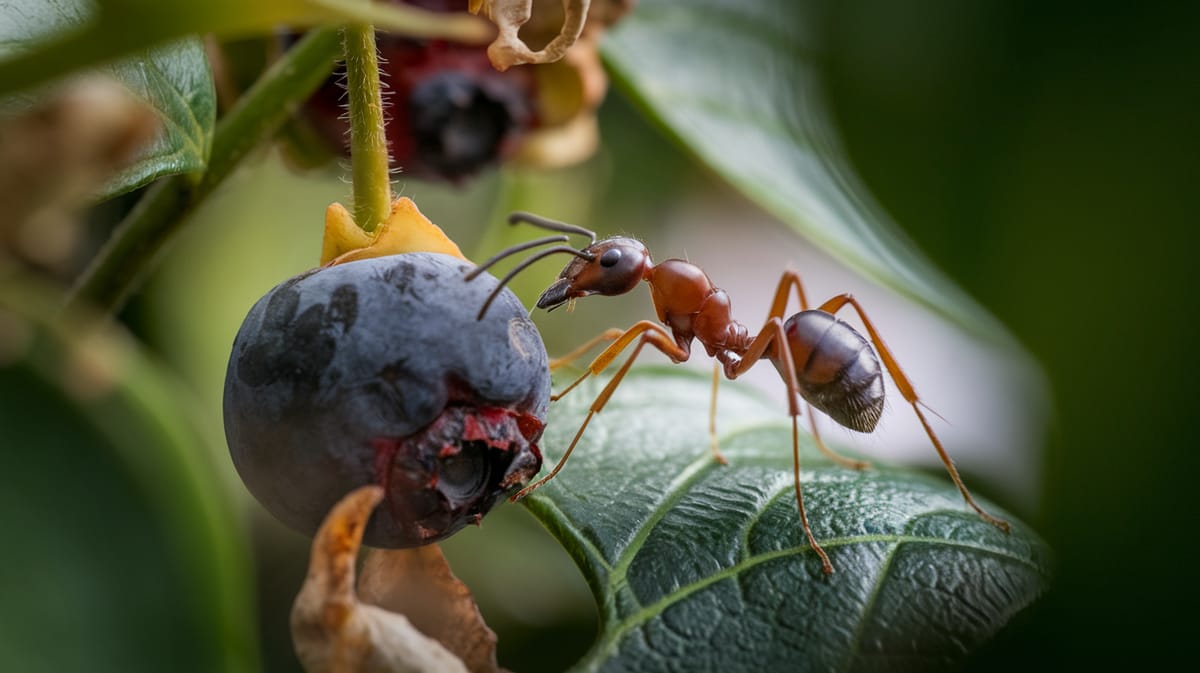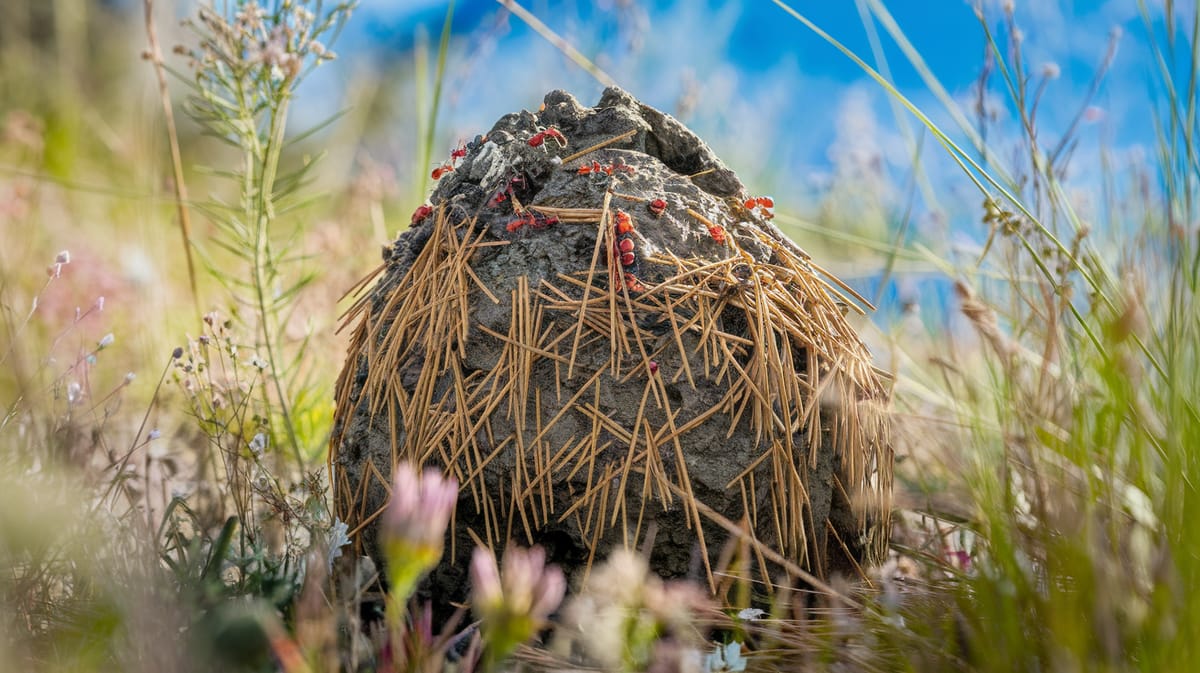Wood Ant
Wood Ants are remarkable architects, constructing large mounds that regulate temperature and protect their colonies. Their role in forest ecosystems includes seed dispersal and pest control.

Key Insights at a Glance
Did You Know?
Taxonomy & Classification
Wood ants are industrious builders, known for their complex social structures and impressive mound nests, reflecting their advanced evolutionary adaptations. Let's understand the evolutionary journey and classification of these remarkable predators, decomposers.
Species Diversity
Wood ants belong to the genus Formica, consisting of over 200 species widely distributed across the Northern Hemisphere.
Evolutionary Adaptations
Evolving around 50 million years ago, wood ants have adapted to diverse ecosystems, thriving in forests through cooperation and efficient resource use.
Lifecycle and Growth
A remarkable journey of transformation from Egg to Adult.
Egg
Eggs are laid by the queen and remain under her care, developing into larvae in a secure nest environment.
Larva
Larvae consume protein-rich food provided by worker ants, growing rapidly and preparing for pupation.
Pupa
Pupae undergo significant transformation, encased in a protective cocoon, transitioning into adult form.
Adult
Adults emerge fully formed, taking on roles like foraging, defense, or reproduction to support the colony.
Dietary Habits
An effective forager with diverse dietary preferences, this insect’s diet includes insects, aphid honeydew, and opportunistic food sources.
| DIET TYPE | DESCRIPTION |
|---|---|
| Primary Diet | Primarily consumes aphid honeydew, which provides essential carbohydrates for colony energy needs. |
| Secondary Diet | Also eats other insects like caterpillars and beetles, contributing protein necessary for larval development. |
| Occasional | Occasionally scavenges on dead animals or plant material, maximizing available nutritional resources. |

Behaviour and Adaptations
Discover the fascinating traits that allow Wood Ants to thrive in diverse environments.
Cooperative Defense
Wood Ants aggressively defend their colonies using teamwork and formic acid sprays.
Sun Navigation
They use the sun's position to navigate and locate food sources efficiently.
Efficient Foraging
Ants form complex trails to optimize resource gathering and colony support.
Ecosystem Impact
Wood Ants play a crucial role in maintaining ecological balance and supporting biodiversity.
Natural Pest Control
Regulate insect populations by preying on pests, reducing the need for chemical pesticides.
Soil Aeration
Improve soil health by tunneling, enhancing nutrient cycling and plant growth.
Seed Dispersers
Assist in plant propagation by spreading seeds to new locations.
Conservation Challenges
Understanding and addressing the major threats to Wood Ant populations.
Habitat Loss
Deforestation and urbanization reduce essential nesting sites for Wood Ants.
Climate Change
Altered temperatures and weather patterns disrupt Wood Ant life cycles.
Chemical Exposure
Pesticides threaten Wood Ant health and ecosystem roles.
Frequently Asked Questions
How long do Wood Ant live?
Wood ants typically live for about 1 to 3 years, with queens having a longer lifespan of up to 15 years. Worker ants generally have shorter lifespans, often surviving for a few months to a year, depending on environmental conditions and colony needs.
What do Wood Ant eat?
Wood ants primarily feed on small arthropods and honeydew produced by aphids. They play a crucial role in controlling pest populations and are known for tending aphids to harvest honeydew, which provides them with a sugary energy source.
Are Wood Ant poisonous?
Wood ants are not poisonous, but they can defend themselves by spraying formic acid. This acid can cause irritation if it comes into contact with skin or eyes. They use this acid as a defense mechanism against predators and threats to their colony.
Are Wood Ant endangered?
Wood ants are not currently considered endangered. They are widespread across Europe and parts of Asia, occupying forested areas. However, habitat loss and environmental changes can impact their populations, so conservation efforts in certain regions aim to protect their habitats.
What do Wood Ant symbolize?
Wood ants often symbolize hard work, teamwork, and cooperation due to their highly organized colonies and complex social structures. They are admired for their industrious nature and ability to work together to achieve common goals, making them a symbol of collective effort and resilience.
Do Wood Ant bite?
Wood ants can bite, but they are more likely to spray formic acid as a defense. Their bites are not harmful to humans but can be mildly uncomfortable. They use their mandibles to grasp and defend against predators or threats to their colony.
What color are Wood Ant?
Wood ants are typically reddish-brown to black in color, with distinctively dark heads and abdomens. Their coloration helps them blend into their natural woodland environments, providing camouflage from predators and aiding in their survival.
Does a Wood Ant have wings?
Only reproductive wood ants, known as alates, have wings. These winged ants emerge during mating season for nuptial flights. After mating, queens shed their wings to establish new colonies, while males generally die shortly after mating. Worker ants do not have wings.
What does a Wood Ant look like?
Wood ants are medium to large-sized ants, with a pronounced, rounded abdomen and a distinct waist. They have strong mandibles and long legs, with the workers measuring about 4-9 mm in length and queens being larger. Their bodies are reddish-brown with darker heads.
Is a Wood Ant an insect?
Yes, a wood ant is an insect. They belong to the order Hymenoptera, which includes ants, bees, and wasps. Like other insects, they have a three-part body structure: head, thorax, and abdomen, along with six legs and a pair of antennae.
Related Insects
Discover insects with similar characteristics to Wood Ant - including shared habitats, diets, and taxonomic classifications
Share this profile
Help others discover Wood Ant
